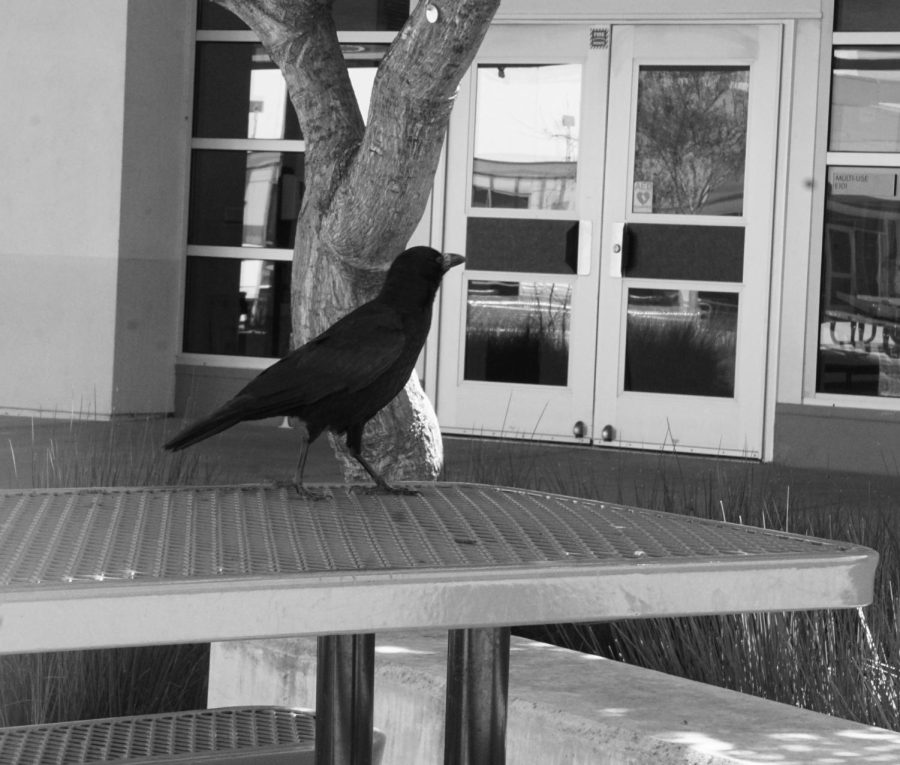CAMPUS: Campus wildlife reflects urban wildlife as a whole
As humanity has exerted more control over the natural world, various urban environments act as a habit for many animals, forcing humans to share space with wildlife, and interactions between animals and humans can be positive or negative for both parties.
SCHS shares the campus with many animals, including gulls, crows, ravens, squirrels and various songbirds, causing many faculty members and students to reflect on their perspective of the school’s ecosystem as well as share their thoughts on whether or not the animals who thrive on campus are opportunistic, fitting into a new niche.
Biology teacher Suzanne Miller-Moody explained that since animals are often drawn to trash as a food source, the population of animals has created a source of littering on campus.
“I think they (animals) are unafraid,” Miller-Moody said. “I’m kind of ribbing kids for being dirty, messy, but I have witnessed squirrels and raccoons and ravens pull things out of the trash can.”
Living on campus could be harmful for the animals. Being around students could raise animals’ stress hormones and impact how they interact, as well as change their diets. Science and AVID teacher Risha Shah questioned whether or not the campus offered a safe environment for certain animals.
“Are we providing them the right type of foods to keep them healthy?” Shah said. “A lot of the things that they eat can end up just being trash or being unhealthy for them.”
Despite the potential harm, wildlife has become a part of the school to some. Senior Felix Fonderie thinks fondly of the campus’s wildlife.
“At this point, I’ve gotten used to them, so I feel like it’d be sad if they were gone,” Fonderie said. “I just like having them around.”
For others, wildlife has provided an educational opportunity for science curriculums. Miller-Moody starts the school year making a field guide with her freshman students.
“This year, we incorporated any and all of the non-plant life we saw,” Miller-Moody said. “We got some squirrels, some seagulls, ravens… a few bugs.”
After implementing a nature walk into her class’s curriculum, Shah explained the benefit of students seeing and referring to biotic and abiotic factors in a real ecosystem.
“Being able to see butterflies, being able to see squirrels, being able to see birds – different types of birds, different types of plants – these are all biotic factors,” Shah said. “(Students) see the connections that they can make that, ‘Hey, humans, animals and plants all fall under this one category.’”
Urban wildlife is widespread throughout cities, not just in Santa Clara. In order to survive in urban environments, animals often have to adapt. According to an article by National Geographic, urbanization drives changes in dominant behaviors and inherited traits. Cities can isolate animal populations and introduce new environmental factors, providing scientists with an opportunity to watch evolution in real-time.
Miller-Moody believes that the effects of urbanization are unavoidable.
“To think that the way we humans use land and interact with nonhuman animals doesn’t have an effect, we’re fooling ourselves,” Miller-Moody said. “Honestly, the more pessimistic side of me sees humans being much more a detriment to the evolution of organisms than a benefit.”
While adaptable animals may be able to fit into an urban ecosystem, others like insects may not survive as well. The possible removal of species in an urban area impacts the whole ecosystem.
“You take out many more than five or six (species) and then you are looking at ultimately an ecosystem in slow collapse because the redundancy has been taken out of the system,” Miller-Moody said.
Human impact on wildlife brings up the question of conservation. Urbanization often cuts off connections between animals’ habitats. Biology teacher Eric Wozadlo cited protecting habitats as a means of safeguarding wildlife.
“The number one way to do that is to create or allow a habitat for them to create buffers between suburban-urban wildlife boundaries,” Woazdlo said. “To limit sprawl.”
Fonderie believes the conservation of wildlife is essential to human survival.
“We have to keep them alive,” Fonderie said. “The world functions better with more biodiversity. It just has a natural cycle feature built in.”
Shah feels the responsibility for conservation extends beyond the possible environmental consequences.
“Our job as a community and as humans in this world should be to protect each other and that includes the animals that are in our community as well,” Shah said.


